Frigid Arctic Weather Returns To The Susquehanna Wetlands Stranding An Out Of Luck Duck
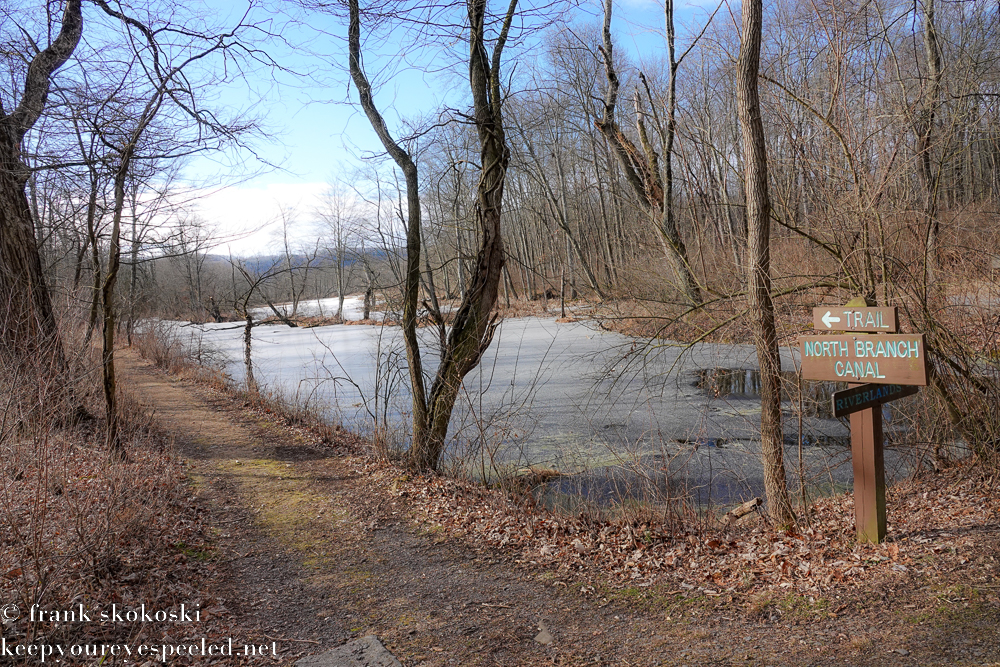
I may have spoke too soon about our mild Winter in my last blog. Frigid arctic air returned to Northeastern Pennsylvania last Friday. A bitter wind, over 25 mph, plummeted temperatures into the single digits. It was 2 degrees at my home in Hazle Township, Luzerne County on Saturday morning. I decided to see how the arctic air affected the Susquehanna Wetlands. Located in Salem Township, about 20 miles from my home. It is at a lower elevation and usually warmer there. The skies were clear and it was sunny when I left my home but there were some high clouds when I arrived at the wetlands. The steam and condensation from the nearby nuclear power plant contributed to the cloud cover as it often does. 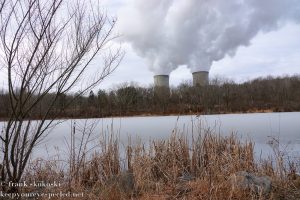
It wasn’t much warmer here on Saturday It was a frigid 4 degrees. The first evidence of the sudden arrival of the arctic air was the ice floating on the Susquehanna River. 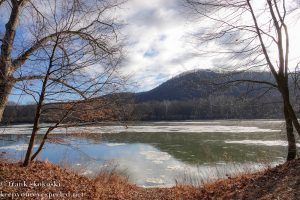
It only took 24 hours of the frigid cold to bring the ice to the river and the waters in the wetlands. I walked into the wetlands and found all of the canals,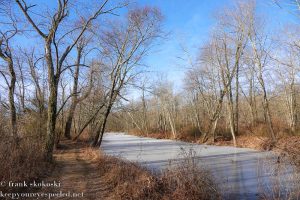
and ponds were now covered in ice. There were no Canada geese honking in the wetlands or on the river this morning. And I didn’t see or hear any mallard ducks or the great blue heron that had stayed in the wetlands because of the mild Winter weather we had. They probably flew south to areas of open water. Some, as you will see, weren’t so lucky. 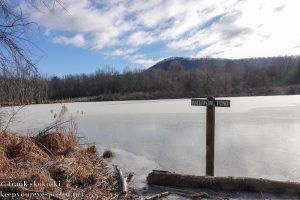
I walked through the wetlands, not seeing or hearing any birds. It was so quiet and peaceful walking on a cold Winter day. Not a sound my entire walk on the trail through the ice covered ponds and canals in the wetlands. 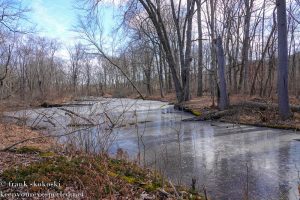
In addition to the creation of the ice the sudden blast of frigid arctic cold affected the few plants still able to exist in our cold northern climate. The fronds of Christmas ferns,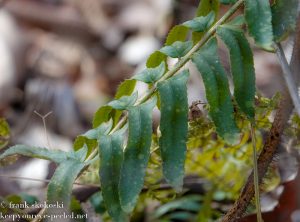
and intermediate ferns had shriveled in the cold, 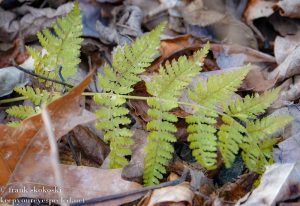
as did the leaves of the garlic mustard, 
and Dame’s rocket leaves which, although frozen solid will revive, somewhat, during the next thaw. The plants are remarkably hardy, and the later two , tasty and good for you too. 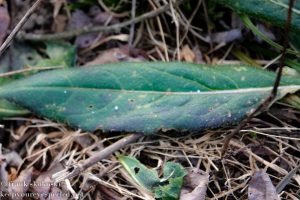
Even the common red winterberries showed the effects of the cold, the too had shriveled.
Patches of ice replaced the puddles of water on the trails. 
I walked through the wetlands not seeing or hearing any wildlife, which is unusual, even on he coldest Winter days.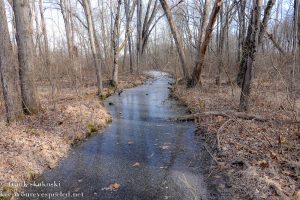
I entered the river lands section of the nature preserve, 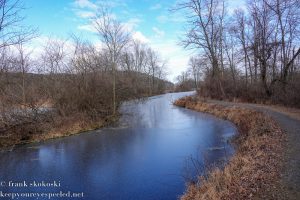
and found the waters of Lake Took-A-While frozen too, well most of them, I would find some open water on the lake.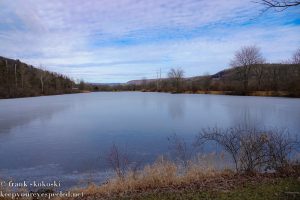
On the trail along the lake I saw my first living things on my five mile hike. I flock of dark eyed juncos, or snow birds. These birds breed in northern forest and actually migrate to our are in the Winter. They are a hardy breed of bird. 
There were also a few song sparrows, and 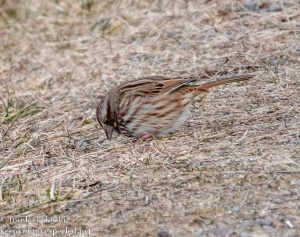
black-capped chickadees feeding along the lake and canal on the other side of the trail. 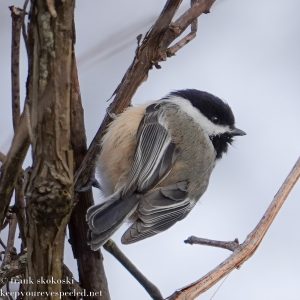
A red-tailed hawk flew over head, but ti quickly for me to get a good photos in the increasingly cloud covered skies. 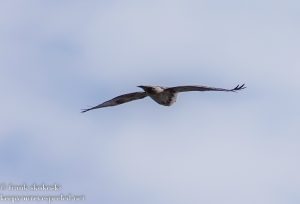
As I walked to the other end of the lake, I noticed an area of open water on the lake. 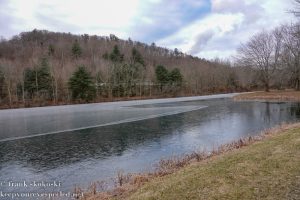
This ruddy duck did too. This poor duck was probably further north then it ought to have been because of the mild weather we have been having. 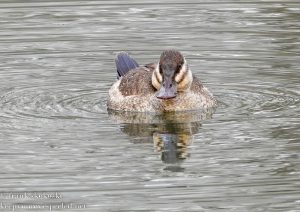
Unfortunately, the sudden arrival of the frigid arctic cold quickly froze the waters and the poor, unlucky duck seen this open water and stopped to rest. I have been told by some duck expert friends that ruddy ducks need a certain distance of open water in order to take flight, and there may not have been enough water at the lake for it to take flight again. 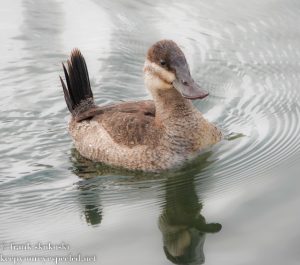
It swam around on the open water, and did not take flight when I approached. I did not want to add to the critters difficult and stressful situation so I left it alone. Warmer weather was predicted for the next day, so hopefully it was able to leave the lake to more open waters further south. 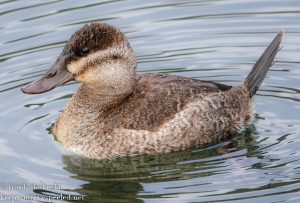
I began my hike back to the wetlands. The cloud cover increased and it was now a cold and dreary day. 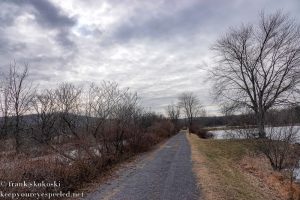
There was no wildlife activity on my return walk until I saw this downy woodpecker and
this white throated sparrow near the end of my five mile hike. Here is a link to some more photos of the ruddy duck and my hike in the frigid arctic cold at the wetlands. . Susquehanna Wetlands February 4 2023. 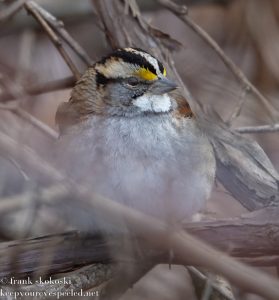
Once again the more exotic and exciting wildlife, the bald eagles, the pileated woodpeckers, the bobcats and river otters that live in the wetlands and river lands were not to be seen. It is always my hope to see and photograph one or all of them and share them on my blog and social media. Not this week. I think they were not moving in the frigid arctic cold. It was still a nice peaceful walk. Well the forecast is for much warmer weather next week. I am sure I will e back in the wetlands to enjoy it. 
“When all is said and done, the weather and love are the two elements about which one can never be sure.”
―
Tags
Categories
Recent Comments